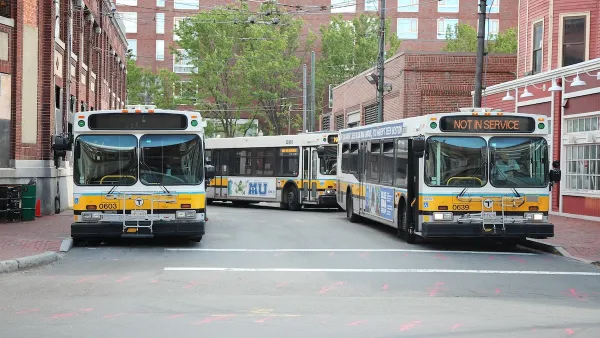Transportation costs disproportionately effect low-income families, while federal transportation spending biases affluent drivers over lower-income mass transit riders. Activists are utilizing civil rights legislation to challenge the status quo.
Amy B. Dean looks at the social justice dimension of how mass transit is planned and funded in the United States. From Oakland to Boston, community activists and transit workers are joining forces to challenge federal, state, and local transit policies and projects to ensure they don’t have a discriminatory impact.
"For millions of American families, the commute to work is more than stressful: it can also be cripplingly costly," says Dean. "While the average family spends around 19 percent of its budget getting around, very low-income families (defined as families who make less than half of an area’s median income) can see as much as 55 percent of their earnings eaten up by transportation costs, according to a report by the Center for Transit-Oriented Development."
"Like many poverty-related issues, transportation has a racial dimension," she explains. "African Americans, on average, use public transit far more than whites do. Nearly 20 percent of black households do not have a car, in comparison to 4.6 percent of white households. Those cars ride on highways that cut through low-income neighborhoods, highways that were built by giving urban areas short shrift. Nationwide about 80 cents out of every federal transportation dollar goes toward highways—used disproportionately by more affluent drivers—and only 20 cents goes toward mass transit systems, which are heavily used by people of color and by lower-income workers. When it’s time to distribute that 20 percent, regional authorities often favor light-rail systems for suburban commuters over bus lines for city riders."
"As the injustice inherent in the distribution of public transit resources has become harder to ignore, activists have emerged to take on the broken system."
FULL STORY: The Road (and Rail) to Justice

Analysis: Cybertruck Fatality Rate Far Exceeds That of Ford Pinto
The Tesla Cybertruck was recalled seven times last year.

National Parks Layoffs Will Cause Communities to Lose Billions
Thousands of essential park workers were laid off this week, just before the busy spring break season.

Retro-silient?: America’s First “Eco-burb,” The Woodlands Turns 50
A master-planned community north of Houston offers lessons on green infrastructure and resilient design, but falls short of its founder’s lofty affordability and walkability goals.

Test News Post 1
This is a summary

Analysis: Cybertruck Fatality Rate Far Exceeds That of Ford Pinto
The Tesla Cybertruck was recalled seven times last year.

Test News Headline 46
Test for the image on the front page.
Urban Design for Planners 1: Software Tools
This six-course series explores essential urban design concepts using open source software and equips planners with the tools they need to participate fully in the urban design process.
Planning for Universal Design
Learn the tools for implementing Universal Design in planning regulations.
EMC Planning Group, Inc.
Planetizen
Planetizen
Mpact (formerly Rail~Volution)
Great Falls Development Authority, Inc.
HUDs Office of Policy Development and Research
NYU Wagner Graduate School of Public Service


























